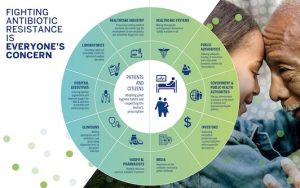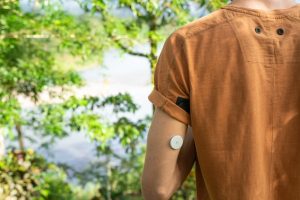: Providing methods to help children with chronic pain
For many of us, describing physical pain can be as simple as saying “ouch” when we stub our toe. But as a clinician, what happens when your client can’t clearly communicate how much pain they are in? This situation is common for many clinicians at Holland Bloorview Kids Rehabilitation Hospital who often meet children who have difficulty communicating the kinds of physical pain they feel due to a disability or medical condition. Children with cerebral palsy (CP) experience multiple sites and sources of ongoing pain due to changes in the body as a result of CP. In many cases, acute and procedural pain is recognizable to a clinician or parent, whereas chronic pain is more likely to be missed. In fact, a Holland Bloorview study showed that 25

 For many of us, describing physical pain can be as simple as saying “ouch” when we stub our toe. But as a clinician, what happens when your client can’t clearly communicate how much pain they are in?
For many of us, describing physical pain can be as simple as saying “ouch” when we stub our toe. But as a clinician, what happens when your client can’t clearly communicate how much pain they are in?
This situation is common for many clinicians at Holland Bloorview Kids Rehabilitation Hospital who often meet children who have difficulty communicating the kinds of physical pain they feel due to a disability or medical condition.
Children with cerebral palsy (CP) experience multiple sites and sources of ongoing pain due to changes in the body as a result of CP. In many cases, acute and procedural pain is recognizable to a clinician or parent, whereas chronic pain is more likely to be missed. In fact, a Holland Bloorview study showed that 25 per cent of children with CP experienced pain that affected participation in everyday activities.
MORE: THE ASSISTED DYING DEBATE
“If clinicians are able to accurately assess pain, they can work with families to help develop appropriate interventions to manage pain” says Nick Joachimides, Manager of Patient Safety at Holland Bloorview. However, pain in children with disabilities is an area with little research and consensus, leaving clinicians with a limited number of uniform pain assessment and intervention tools to turn to.
The Evidence to Care (EtC) team at Holland Bloorview was created in 2011 to tackle exactly this type of gap in knowledge. The team facilitates the identification of the best available research evidence, and then works with clinicians to inform new approaches to care. It is part of Holland Bloorview’s ongoing commitment to transform care through evidence, knowledge generation and translation.
After getting input from a multidisciplinary clinical group, researchers and family leaders, the Chronic Pain Assessment Toolbox for Children with Disabilities was identified as one of EtC’s first priority projects.
Building the Toolbox required a working group led by EtC team to complete a systematic review of pediatric chronic pain assessment tools and a structured review of clinical practice guidelines. An expert consensus activity was also completed to identify the best tools and resources to include for clinicians.
The final Pain Toolbox combines pain assessment recommendations from the 2013 Registered Nurses Association (RNAO) Best Practice Guideline, the CP-specific practice points developed by experts at Holland Bloorview and fifteen assessment tools to identify chronic pain and look at the impact pain has on a child’s everyday activities.
To bring this new knowledge into practice, the EtC team worked with Holland Bloorview’s Centre for Leadership in Childhood Development to lead a pilot project assessing chronic pain in children who have CP.
MORE: ELECTRICAL PULSES IN SPINAL CORD EFFECTIVE FOR CHRONIC PAIN
“Asking about pain and its impacts has always been a key part of our assessment,” explains physical therapist and EtC clinician champion Katie Symes, “The chronic pain toolbox allows us to do this in a more standardized way, using tools that are reliable and sensitive to change.”
The Toolbox provides a range of methods and techniques that can be customized for children with CP who may have different ways of explaining the kind of pain they experience.
Understanding how pain affects the livelihoods of children with CP is not only important for clinicians, but also Holland Bloorview clients and their families.
“Pain management is crucial. It impacts all aspects of my son’s life,” explains Jan Magee whose teenage son Wesley has CP, “When he’s in pain it may mean he can’t use his walker, or he can’t focus because the pain is distracting him. It affects his mobility, his independence, his mood – all aspects that affect his overall quality of life.”
The Toolbox has now been successfully piloted in a numbers of outpatient clinics at Holland Bloorview.
Dr. Anne Kawamura has used the Toolbox at Holland Bloorview’s Pediatric Rehabilitation clinic. Kawamura worked with EtC to select the best tools for her clients. She agrees that the Toolbox facilitates a more consistent approach to pain assessment.
“We weren’t missing pain in large numbers of children,” says Kawamura, “However for those who were experiencing pain, it was a significant issue for them.”
By providing a comprehensive list of methods to identify the degree and types of pain in children with disabilities, the Toolbox is having significant and positive impact on pain management at Holland Bloorview.
With funding support from the Government of Ontario and the hospitals’ Foundation, Holland Bloorview is able to share its new knowledge and promote evidence-informed pain assessment broadly within the healthcare system. The Toolbox and manual to support its implementation is now available at www.hollandbloorview.ca/toolbox
The post : Providing methods to help children with chronic pain appeared first on Hospital News.
SOURCE: Hospital News – Read entire story here.








